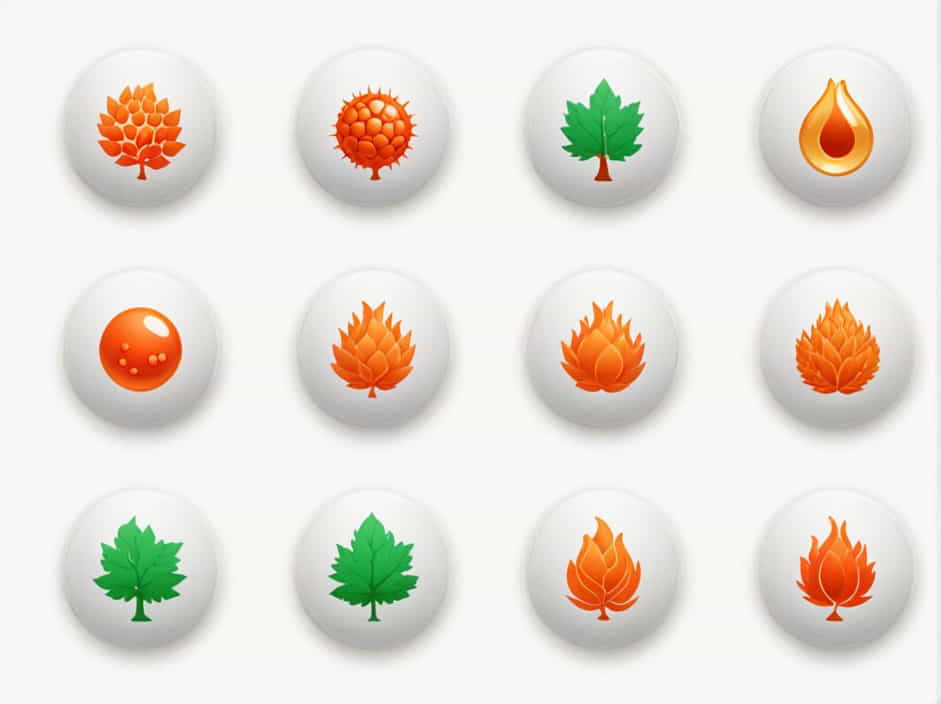Cells are the basic units of life in all living organisms. While both plant cells and animal cells share many similarities, they also have key differences that allow them to perform specialized functions. Understanding these differences is essential for studying biology, genetics, and cellular processes.
1. Overview of Plant and Animal Cells
Both plant and animal cells are eukaryotic cells, meaning they have a nucleus and membrane-bound organelles. However, due to differences in their roles in nature, they have distinct structural and functional features.
Key Differences at a Glance
| Feature | Plant Cells | Animal Cells |
|---|---|---|
| Cell Wall | Present (made of cellulose) | Absent |
| Chloroplasts | Present (for photosynthesis) | Absent |
| Shape | Generally rectangular or square | Irregular or round |
| Vacuole | Large central vacuole | Small or absent |
| Centrioles | Absent in most plants | Present |
| Lysosomes | Rare | Common |
| Energy Storage | Starch | Glycogen |
2. Structural Differences Between Plant and Animal Cells
A. Cell Wall vs. No Cell Wall
- Plant cells have a cell wall made of cellulose, which provides structural support and protection.
- Animal cells lack a cell wall, which allows them to be more flexible and adopt different shapes.
B. Chloroplasts in Plant Cells
- Plant cells contain chloroplasts, the organelles responsible for photosynthesis, which converts sunlight into energy.
- Animal cells do not have chloroplasts because they obtain energy from consuming food rather than producing their own.
C. Shape and Rigidity
- Due to the presence of a cell wall, plant cells have a fixed, rectangular shape.
- Animal cells have a more rounded or irregular shape, allowing them to change form and move more easily.
D. Vacuole Size
- Plant cells contain a large central vacuole that stores water, nutrients, and waste, helping maintain turgor pressure (rigidity).
- Animal cells have small vacuoles or may lack them altogether.
3. Functional Differences Between Plant and Animal Cells
A. Energy Storage
- Plant cells store energy in the form of starch, a complex carbohydrate.
- Animal cells store energy as glycogen, which is quickly converted into glucose when needed.
B. Cell Division and Centrioles
- Animal cells have centrioles, structures that help organize the spindle fibers during cell division (mitosis and meiosis).
- Plant cells typically lack centrioles but still undergo cell division using a different mechanism.
C. Presence of Lysosomes
- Lysosomes are more common in animal cells, where they help break down waste, damaged organelles, and harmful substances.
- Plant cells rarely have lysosomes because their vacuoles handle waste disposal.
4. Metabolic Differences Between Plant and Animal Cells
A. Photosynthesis vs. Cellular Respiration
- Plant cells can perform both photosynthesis and cellular respiration, using sunlight to produce food and converting it into energy.
- Animal cells rely only on cellular respiration, breaking down food (glucose) to produce energy.
B. Oxygen and Carbon Dioxide Exchange
- Plant cells take in CO₂ (carbon dioxide) and release O₂ (oxygen) during photosynthesis.
- Animal cells take in O₂ and release CO₂ during respiration.
5. Adaptations of Plant and Animal Cells
A. How Plant Cells Adapt to Their Functions
- Cell walls provide support, enabling plants to grow tall without collapsing.
- Chloroplasts enable photosynthesis, allowing plants to produce their own food.
- Large vacuoles store water, helping plants survive dry conditions.
B. How Animal Cells Adapt to Their Functions
- Flexibility allows movement, essential for animals that need to change shape or migrate.
- Lysosomes help digest food and remove waste, keeping the cell clean.
- Centrioles assist in rapid cell division, necessary for growth and repair.
6. Similarities Between Plant and Animal Cells
Despite their differences, both plant and animal cells share some common features:
- Both have a nucleus, which contains genetic material (DNA).
- Both contain mitochondria, the powerhouse of the cell that produces ATP (energy).
- Both have a plasma membrane, which regulates what enters and exits the cell.
- Both contain ribosomes, which synthesize proteins for cell functions.
Plant and animal cells have distinct structures and functions that allow them to thrive in their respective environments. Plant cells are designed for photosynthesis, water storage, and structural support, while animal cells are built for movement, energy consumption, and digestion. Understanding these differences is fundamental to the study of biology and helps us appreciate the diversity of life on Earth.
